With over fifty years of experience in the Metal Finishing industry, Apex knows how to get the job done by choosing the most efficient and effective equipment with correct blend of media. Not only does Apex provide a wide variety of finishing services, they also sell the equipment and consumables that they use in their everyday processes.
Mechanical Plating/Galvanizing
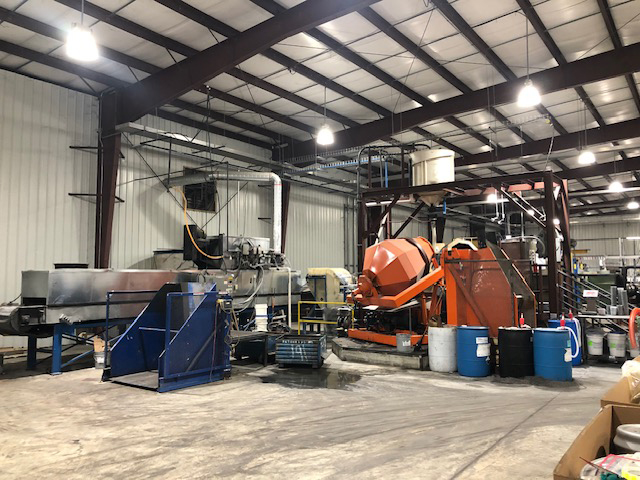


Mechanical plating offers an efficient method for the application of zinc, tin, aluminum, or other ductile irons onto metal substrates. Its primary purpose lies in ensuring the reliability of products by eliminating the risk of hydrogen embrittlement. Mechanical Galvanizing, an extension of mechanical plating, closely parallels the former process, with one notable difference – it results in significantly thicker zinc coatings. Galvanized coatings typically range from 1 mil (equivalent to .045 ounces per square foot) to 3.3 mils (equivalent to .1 1/2 ounces per square foot). A few of the advantages of Mechanical Plating/Galvanizing are listed below:
- No Hydrogen Embrittlement
- No Dempering
- Excellent Thread Fit
- No need to chase nuts after plating
- No Galling
- No Stickers
- Excellent Adhesion
- Performance of coating complies with requirements of Specification A-153/A153M and Mil-L-81562
Click here to request a quote or contact us with questions >
Vibratory Finishing
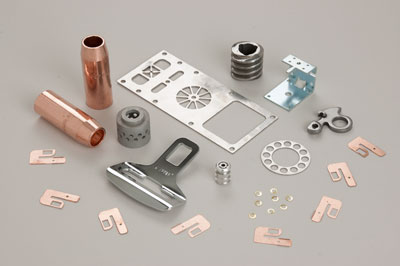
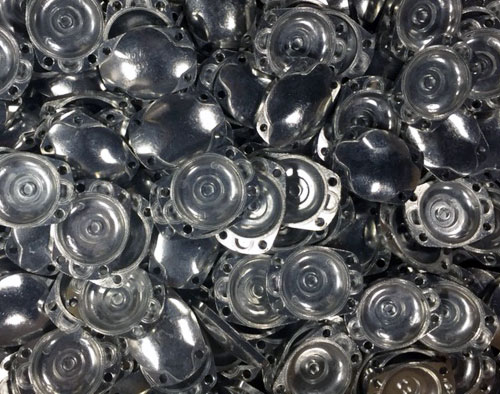
Vibratory finishing is very similar to tumbling, however it is more delicate in nature. Metal parts are placed into a bowl or a tub along with media (ceramic, plastic, steel, POP, etc). The vibratory motion of the machine causes the media to continuously rub against the part as the parts turns in a corkscrew movement, and work their way around the bowl or tub. This abrasion, coupled with added compounds, is what removes the impurities and imperfections on the metal.
Uses of Vibratory Finishing
- edge breaking
- radiusing
- burnishing
- cleaning
- deburring
- descaling
- polishing
- material brightening
Apex Metal Finishing has more than a dozen vibratory and tumbling options to ensure the best process for your metal finishing needs. Give us a call, or request a quote today and see why we truly deliverthe perfect finish every time.
Equipment Availability: Vibratory Bowls, Vibratory Tubs, Rotary Barrels, High Energy Centrifical Barrels
Click here to request a quote or contact us with questions >
Certified Shot Peening

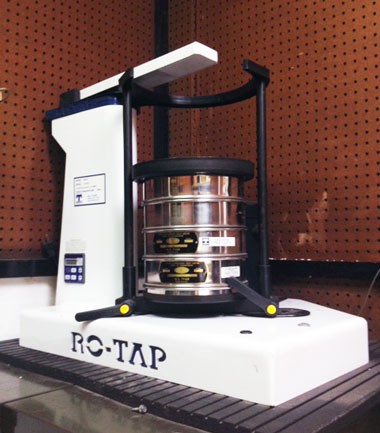
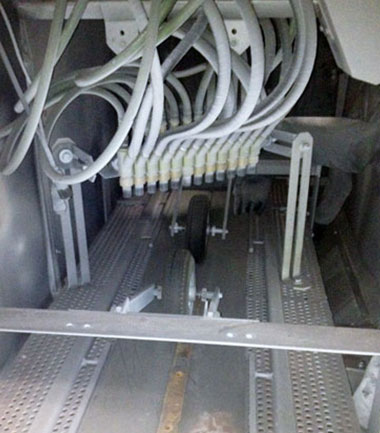
Apex Metal Finishing is a premier provider of shot peening services. Shot peening is a controlled and reproducible process that impacts metal surfaces with spherical particles, which realigns the mechanical structure at the surface and produces a compressive residual stress layer that inhibits the formation of fatigue cracks on the materials surface and substantially increases the service life of the product. Apex uses a wide variety of media material (steel shot, cut wire, glass bead, etc.), verified against A, N, and C type Almen strips for consistent results.
Apex will assist you with troubleshooting performance issues, interpreting industry specifications, and developing proprietary peening specifications. Our highly skilled quality technicians conduct both visual inspections and surface imaging studies to quantify the effects of the shot peening process and verify process integrity.
Installation qualifications (IQ) and operational qualifications (OQ) are completed for all processing and support equipment within Apex’s validated facility.
Below are a few of the common specifications Apex can meet:
SAE AMS 2430, SAE AMS 2431, SAE J2441, Boeing BAC 5730
Click here to request a quote or contact us with questions >
Passivation

Stainless steel passivation is a process that makes stainless steel less susceptible to corrosive environmental factors such as air and water. While stainless steel is corrosion-resistant by nature, it is not entirely impervious to rusting-iron embedded in the surface during part forming and machining can corrode and create rust spots on the stainless steel, called rouging.
In stainless steel passivation, exogenous iron and/or iron compounds are removed from a stainless steel surface. Passivating improves the condition of part surfaces by removing surface contaminants in a chemical bath. This chemical bath dissolves the embedded iron without significantly affecting the stainless steel. After the parts have been run through the passivation bath, a passive film is spontaneously formed. This passive film improves the stainless steel’s corrosion resistance.
Benefits of Stainless Steel Passivation:
- Improved corrosion resistance without plating
- Superior clean surface
- Eliminates iron contamination reactions with other materials
- No discoloration from rust
- No dimensional change
Apex Metal Finishing certifies to many passivation and cleaning specifications, including: AMS 2700, AMS-QQ-P-35, ASTM A380, A967
Certification
When requested, Apex Metal Finishing will provide certification of passivation and testing.
Click here to request a quote or contact us with questions >
Abrasive Blasting/Tumble Blasting
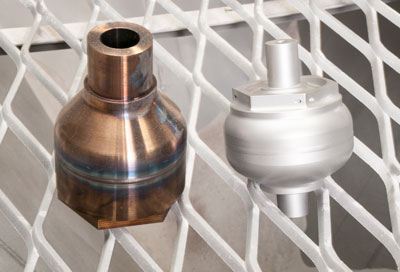
Abrasive blasting is used to finish, clean or prepare metals and plastics using a variety of media in blasting machines. Some of the most common types of abrasive blasting media we use include glass bead, ceramic and aluminum oxide. Apex has a wide variety of equipment ranging from hand cabinets to even a walk in blast room that is 6ft. wide X 15 ft long. Blasting removes surface debris such as rust or other types of residual contaminants and scale. This process is also important in the cleaning and roughening of part surfaces prior to coating. The increased surface adhesion of a suitably blasted part results in a stronger bond between the coating and the parts surface.

Tumble Blasting is another automated way to provide a blasted uniform finish on parts. The parts are loaded into a chamber onto a heavy duty, rubber belt, which then rotates, forcing the parts to tumble on top of each other inside the machine. A wheel directs shot onto the parts at a high velocity, and is an efficient way to remove heat treat scale, rust, or to prepare for paint adhesion. Parts must be durable enough to withstand part on part contact. Apex uses a variety of steel shot to steel grit in its wheels.
Click here to request a quote or contact us with questions >
Parts Cleaning

Apex offers a variety of part washing options to meet, and exceed your cleanliness requirements. We can handle anything from small to medium sized parts, and even larger, heavier parts. Our washing units have been custom built and designed specifically to remove oil, dirt and certain types of metal corrosion. Our process preserves the integrity of your parts and ultimately extends their maximum lifetime. Our wash processes also offer rust inhibiting stage and full drying capabilities to provide maximum corrosion protection.
3 Stage Tumbling Washing
These agitating washers combine a tumbling/orbital motion with spray and immersion to flush-out chips and strip-off oils from the most complex parts. Parts that can tumble are put in covered baskets. Parts that need to orbit without tumbling are “locked” into covered racks or a fixture.
Turn Table Washer
High temperature (190 degrees) , high pressure (150 psi) turn table washer can handle up to 3000 lbs of parts at a time. This machine is perfect for removing oil off stamped parts or forging before they are E-coated, Powder Coated, Plated, or just sent to the end user.
Vapor Degreasing
Vapor degreasing is a surface finishing process that uses vaporized solvents to remove oil, and other solvent-soluble contaminants. A vapor degreaser is a machine with an enclosed area with a heating element. The heating element is used to bring the necessary solvent to a boil. As the solvent boils and evaporates, the resulting vapors rise into the open space within the chamber, where the workpiece has been placed. Ideal for critical parts that have soft surfaces and parts that can’t have inpingment.
Ultrasonic Cleaning
Ultrasonic Cleaning is achieved using transducers in or attached to the bottom of a tank to emit and radiate sound waves through the cleaning solution. These sound waves cause millions of microscopic bubbles to form and grow. This process is called CAVITATION. These Ultrasonic Cleaning bubbles then collapse or “implode” releasing enormous amounts of energy. These implosions work in all directions to ultrasonically clean and remove contamination from the work piece.
Click here to request a quote or contact us with questions >




